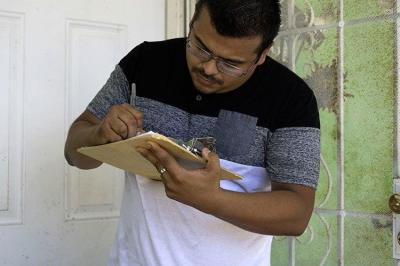
Creating Petitions and Gathering Signatures
Note: This is chapter 4 of Best Friends Animal Society's Grassroots Advocacy Toolkit.
Local agencies and elected officials need to know you care about saving the lives of homeless pets. And pets in your community need your voice to help make that happen. Having good old-fashioned face-to-face conversations with people in your community is the most effective way to build the support you need to save more lives.
Creating a hard-copy petition and collecting community members’ signatures for it can develop awareness, increase community engagement, and build a contact list of local supporters. After writing a petition, circulate it at a forum, while tabling or canvassing, and at other community events. In addition, consider writing a separate, perhaps more detailed petition for like-minded organizations to sign to demonstrate coalition-style support.
Effective petitions are ones that are strategically created and distributed and that get a significant number of signatures. Timing signature-gathering to precede important decisions and votes is key, as is following up with local officials to keep the momentum going. So start collecting signatures several weeks before you need them and make sure to be mindful of dates and follow up accordingly.
Home starts with you
An important note: Petitions are only effective when you are able to collect a significant number of signatures in advance of critical dates.
Also, think about how you want to deliver your petition signatures. For example, you could use the opportunity for additional press coverage, and invite supporters and reporters to a city council meeting where you hand-deliver it.
Tips for successful petitions:
- Address the petition to the people who possess decision-making power related to your group’s goals. For example, direct the petition to the city council or the mayor rather than the “town of X” or the “people of X.”
- Make sure signatures are legible. You should also leave space on the petition for people to include their street address, so elected officials can verify that they are local constituents.
- Ask people whether they want to join your action team or be added to your campaign’s contact list. If so, get their contact information (email address, phone number, and mailing address), and follow up with them within a week.
- Always make copies of petitions or signature cards before delivering them so that you can follow up with people who signed them and use them in the future.
Decide when and where to conduct outreach
- Print the petition. It should contain a fact sheet and space for signatures.
- Decide when and where you’ll do outreach. Start with your neighbors, friends, and family, and then ask them to come along when you talk with others. Plan to visit community events, local coffee shops, grocery stores, libraries, farmers markets, college campuses, or any areas with foot traffic.
- Grab a clipboard, pens, and the petition, and hit the streets to collect signatures and comments.
Collect signatures and comments
It’s best to keep your pitch very short and simple. Here are some useful talking points:
- Hundreds of cats and dogs in our community are at risk of being killed this year just because they don’t have safe places to call home.
- There’s been amazing lifesaving progress over the past several years, but too many animals are still being killed, and there’s so much more that can and should be done.
- Our elected officials need to know their constituents want to live in a no-kill community, and our shelters need the public’s support to get there.
- We have the opportunity to be a part of the solution and help our community’s shelters get the resources they need to save every pet who can be saved.
Finally, take photos of your outreach efforts to share on social media and send to us at action2025@bestfriends.org. Celebrating and sharing your success stories through our channels will help inspire other compassionate people around the country to follow your lead.
